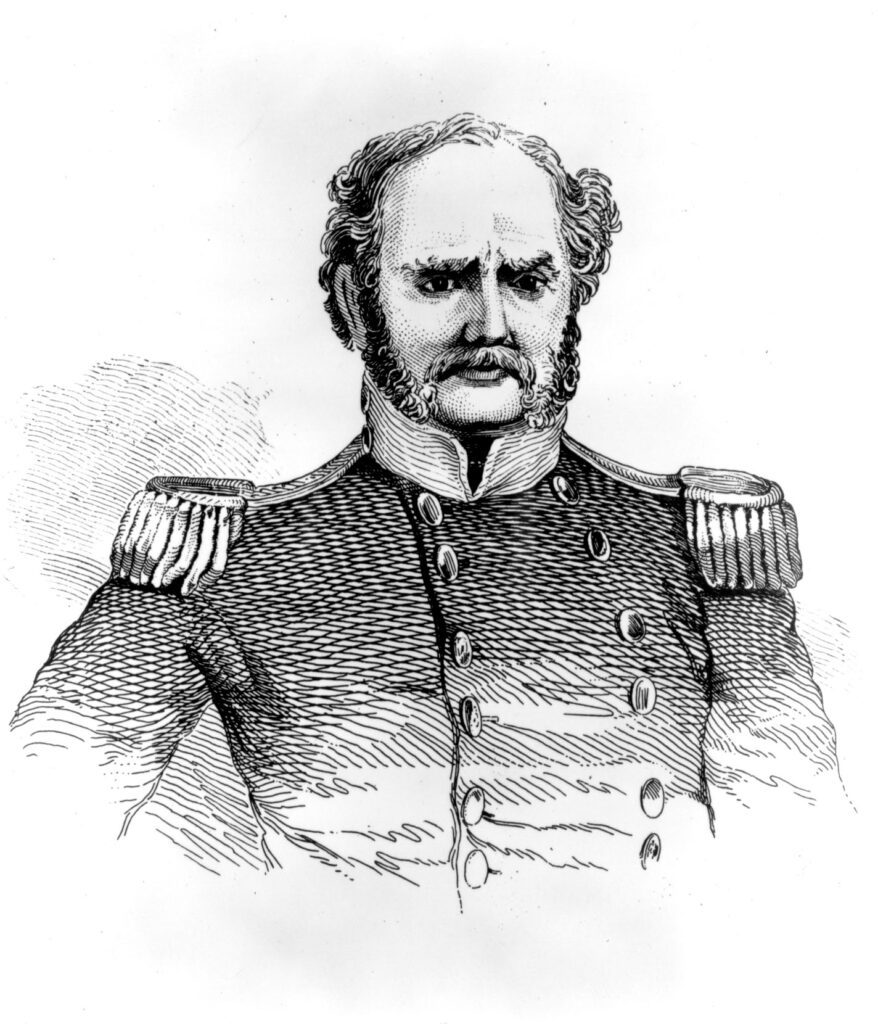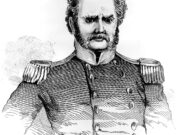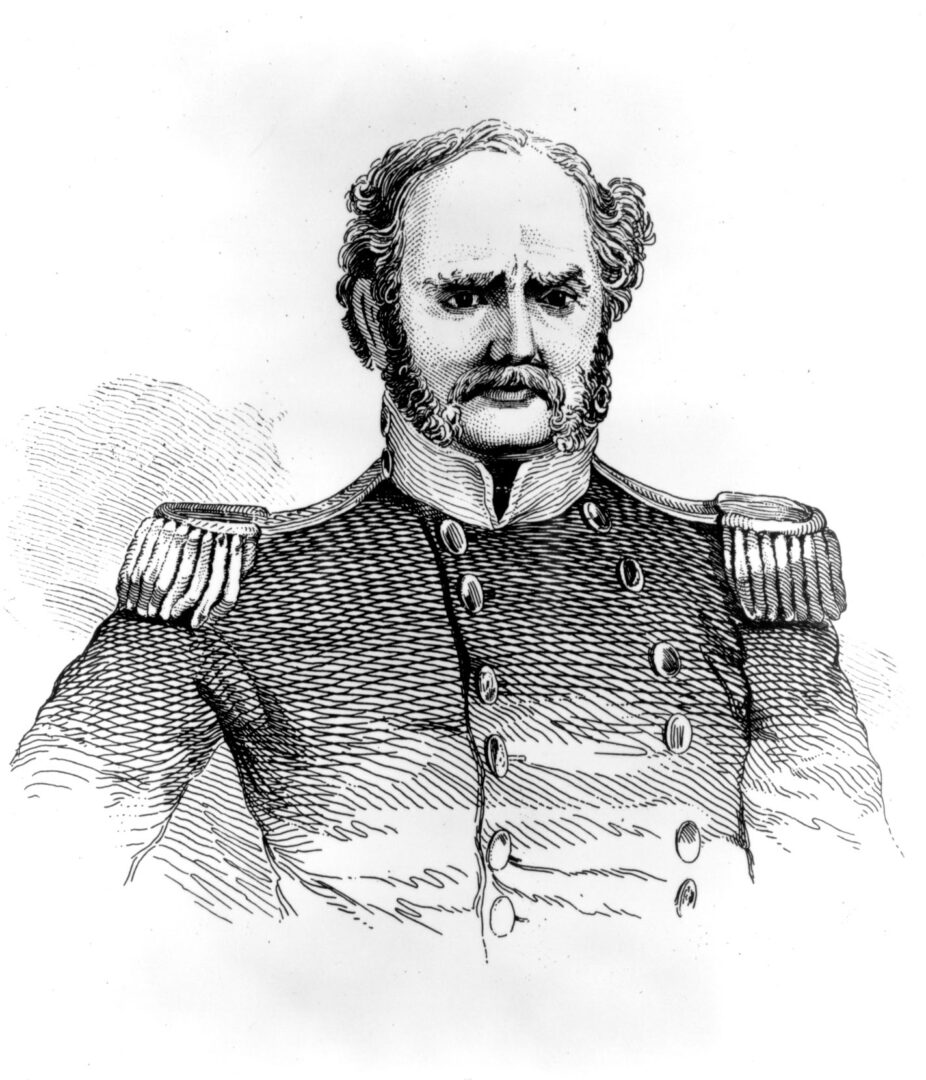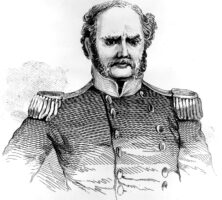A prominent militia leader during the Revolutionary War (1775-83), John Twiggs led Georgia forces against both the British and the Cherokee Indians in the backcountry. After the war he remained active on a variety of political and military fronts, statewide and in and around Augusta, including involvement in the Yazoo land fraud. Twiggs County, created in 1809, was named in his honor.
Early Life
Twiggs was born on June 5, 1750, in Maryland. His parents’ names are unknown, and his antecedents and early life are shrouded in obscurity. Unsubstantiated family history records show that he was descended from a Jamestown, Virginia, settler; biographical sketches placed him in Georgia in the 1760s accompanying the family of David Emanuel Sr., who had emigrated from Maryland, Pennsylvania, or Virginia to St. George’s Parish (later Burke County). As a youth, Twiggs may have been trained as a carpenter or millwright.

He married Ruth Emanuel, a daughter of his guardian and the sister of the younger David Emanuel. They had at least five sons and one daughter, and the most prominent of their children was David Emanuel Twiggs, a U.S. Army general who surrendered U.S. forces to state Confederate authorities when Texas seceded from the Union in 1861.
Military, Political, and Civic Career
Twiggs began his military career in the militia. In August-September 1775 he was a member of Captain John Lamar’s militia company, a unit organized by the Council of Safety and the Committee in Augusta. During the Cherokee War of 1776 he commanded a company in Colonel Samuel Jack’s Georgia regiment.
During the Revolutionary War Twiggs and his militia opposed the British advance on Augusta and fought, as part of Lachlan McIntosh’s brigade, at the abortive Franco-American attack on Savannah in October 1779. That same year he was promoted to colonel of the Fourth (Burke County) Militia Regiment. When Tory troops reoccupied Augusta in June 1780, Twiggs and his family fled to the Georgia backcountry, and the following autumn they probably accompanied Elijah Clarke’s exodus to the Carolina mountains. Twiggs’s name was on a list of Georgia Whigs proscribed from political activity by royal governor Sir James Wright in the summer of 1780. When Colonel Thomas Sumter defeated British lieutenant colonel Banastre Tarleton at Blackstocks, South Carolina, in November 1780, Twiggs and his small command of Georgia militia participated. He was further promoted to brigadier general in August 1781 and spent all of 1782 helping to drive the British out of Georgia and quell their Creek Indian allies. As a result of his efforts during this period Twiggs became known as the “Savior of Georgia.”
Twiggs also played a role in civil affairs. In December 1779 he was named the Burke County member of Governor George Walton’s executive council, and in January 1780 he was appointed to a commission to oversee settlement in the Georgia backcountry. He served in the state legislature in 1779, 1781, and 1782, and he was appointed in 1782 as justice of the peace in Burke County.
After the Revolutionary War, Twiggs and his family settled in Richmond County, just south of Augusta, at New Savannah on the Savannah River. There he established a working plantation of 1,500 acres called New Hope, which partly comprised confiscated Tory land that was awarded to him. He farmed tobacco; built a warehouse, inspection station, and dock; accepted and stored tobacco from local farmers prior to shipment; and bought a wharf in Savannah to receive shipments of the crop. No records survive regarding the number of enslaved people Twiggs owned over his lifetime, though he left seven enslaved persons to his wife when he died. The Twiggs land later became Augusta’s Bush Field airport. The only extant remnant of the estate is the family cemetery, now identified by a historical marker.
In 1783 Twiggs continued his public service with an appointment as a state Indian commissioner and concluded land cession treaties with the Creeks. In 1791 he served on the committee that welcomed U.S. president George Washington on his visit to Augusta. Twiggs was also a member of the commission that selected the site for a state university (which became the University of Georgia), and was a trustee of Richmond Academy and later of the new university. He was promoted to major general of militia in 1792, conducted an expedition against the Creeks in 1793, and led the troops that compelled the abandonment of Elijah Clarke’s Trans-Oconee Republic rebellion in 1794. He was involved in mobilization of the militia for war with Britain in 1807 and 1812 and for suppression of a suspected slave revolt in 1810.
Twiggs and six partners formed a company in 1795 to invest in Yazoo land, but they were unsuccessful in their bid. After the Yazoo land scandal broke, Twiggs sat on the Richmond County grand jury that reported “the citizens generally execrate the [Yazoo] business.” Twiggs allied himself with James Jackson and other reformers.
Twiggs died on March 29, 1816, and was buried in the family cemetery, where his grave marker still stands.






